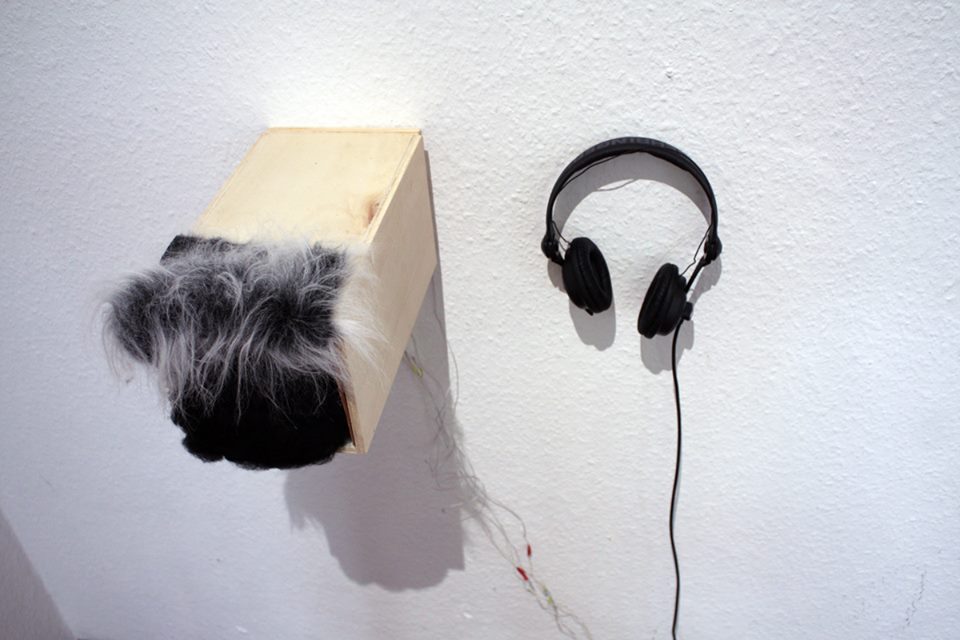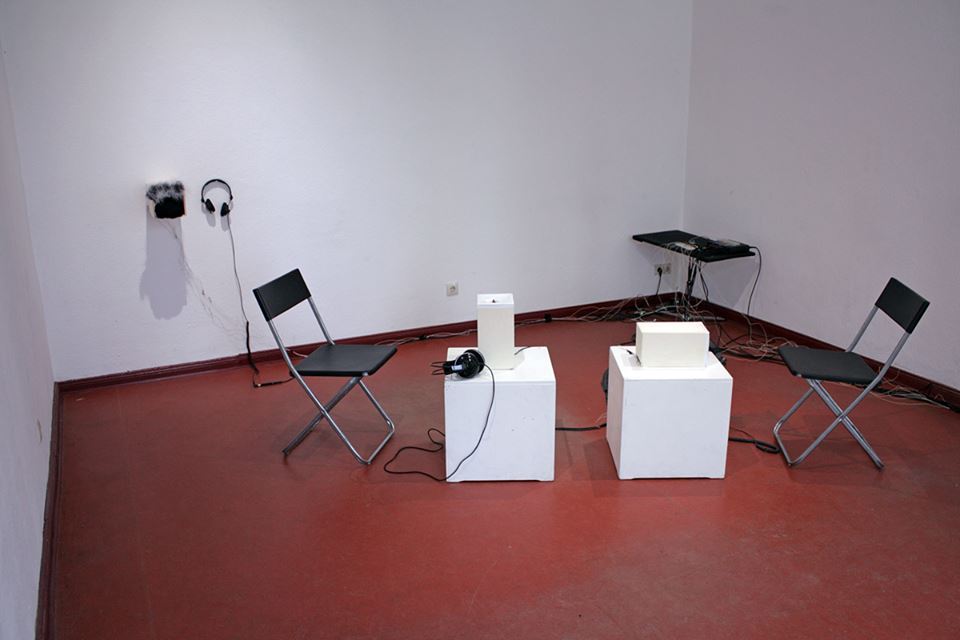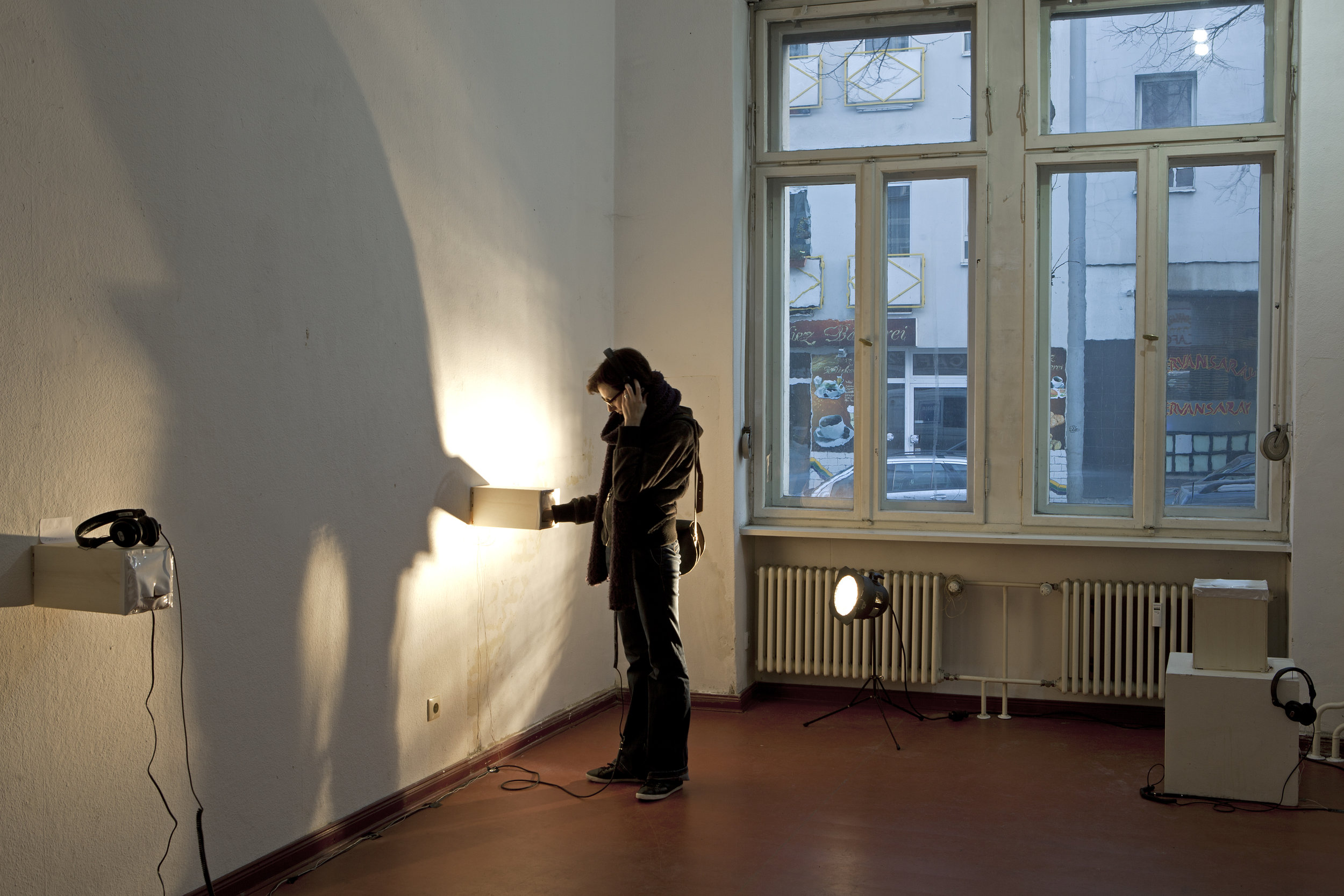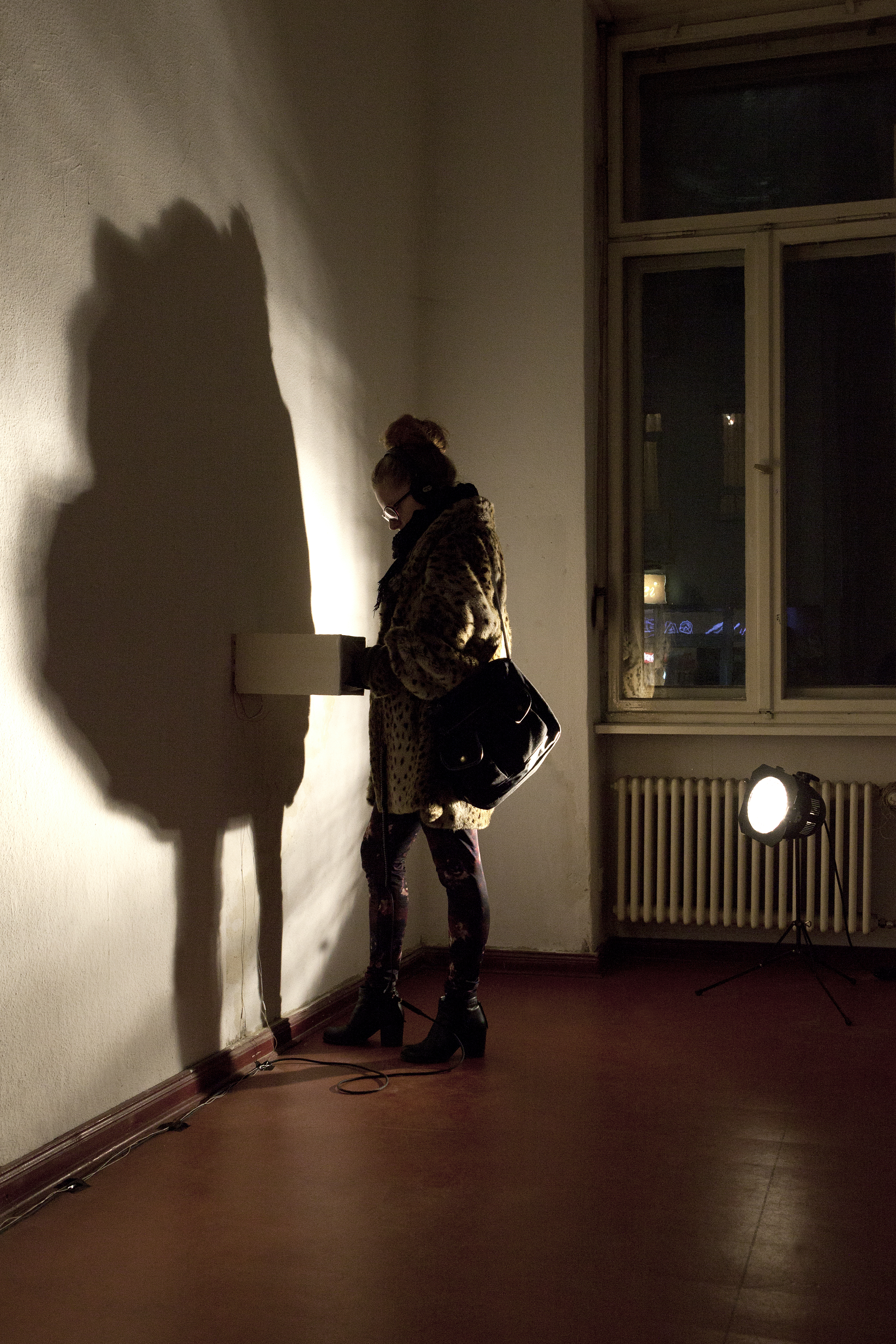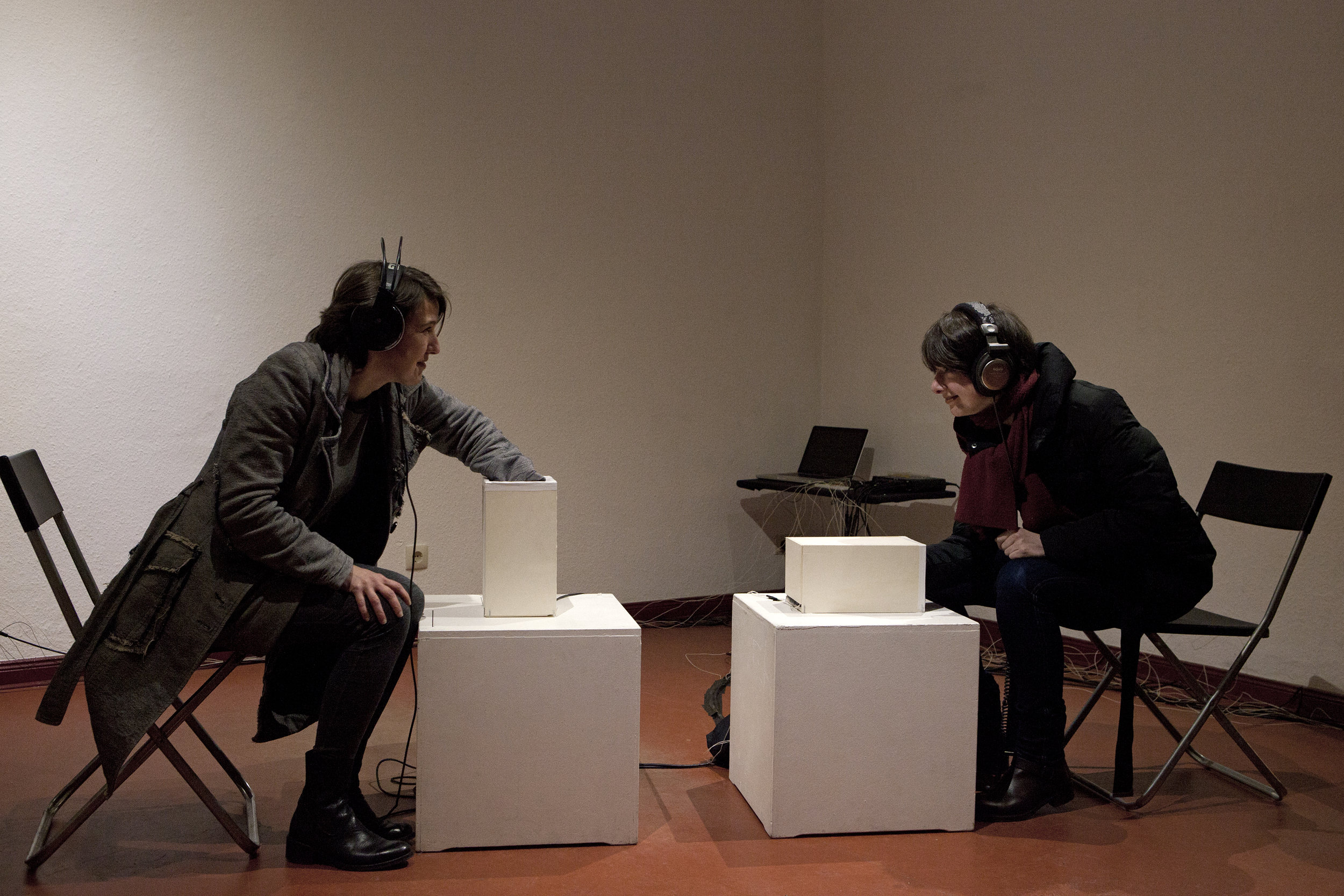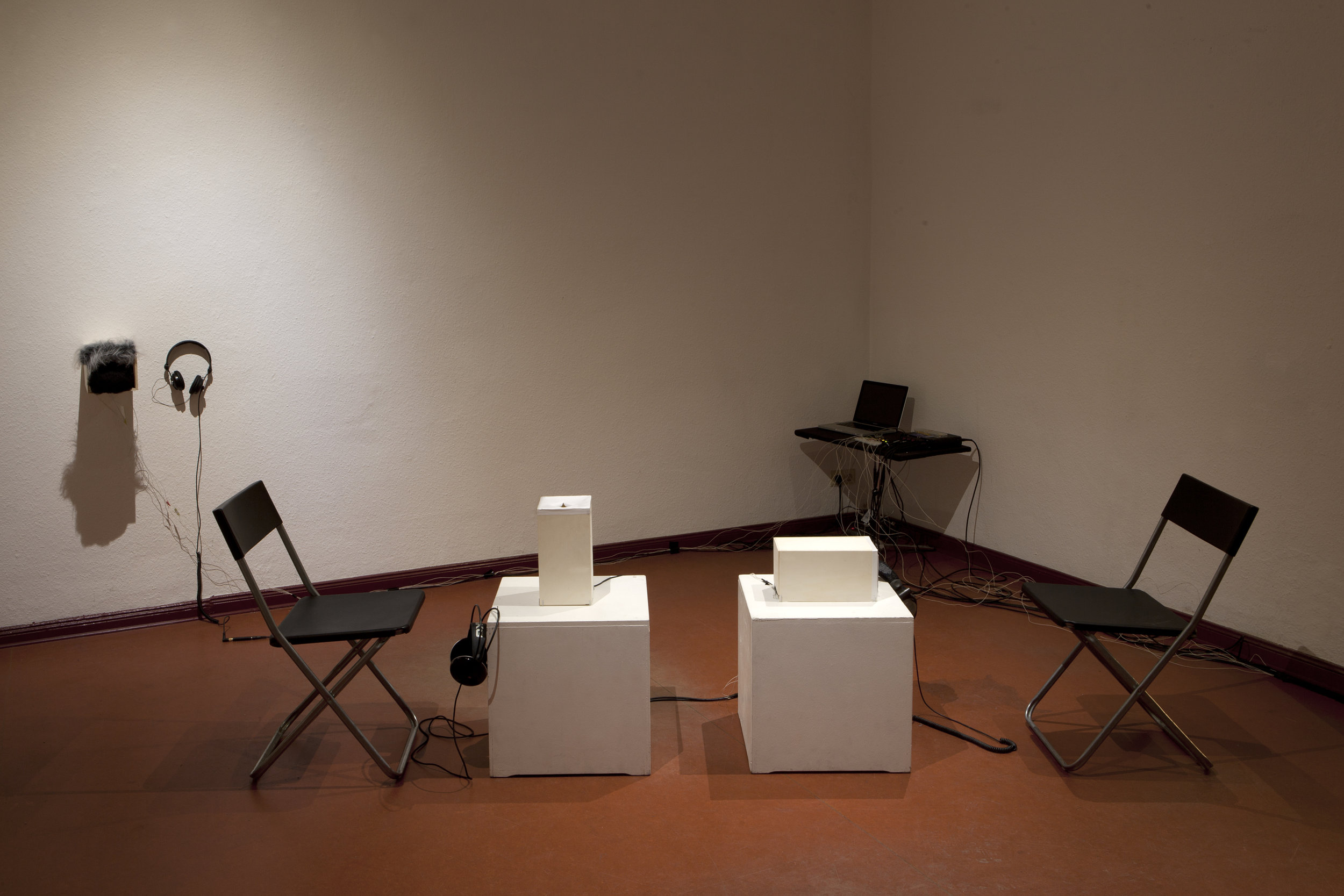Sense Boxes: interactive multimedia installation (2014- ongoing)
Technology: Motion Tracking Systems (infra-red, pressure, bend, e-textile, stretch, video, ultrasonic), Arduino, MAX, microphones, headphones.
This installation brings physicality back from the touch-less world of disembodied electroacoustic music by asking the question “If you could touch a sound what would it feel like?”
We are constantly touched by sound in the world around us. But it touches us, we don’t touch it. In this interactive installation for boxes, fabric, sounds & sensors, participants are invited to discover what a sound might feel like if we could hold it in our hands. Like the selected physical materials, the sounds used are highly textural. The two are connected together, so that a sonic “fuzzy” sound is matched with a physical “fuzzy material”. Each box is embedded with a variety of sensors (force, stroke, stretch, etc. ). The participant then gently pushes, pulls, squeezes, and stretches the material, which manipulates the sounds coming through the headphones. Sensitivities are rewarded with subtle interactive moments.
Sight is intentionally masked, so that touch is intimately connected with listening. Participants are encouraged to listen with fresh ears to the electronic sounds, and encouraged to connect with notions of space and form that are embedded in each of these distinctive virtual objects.
Sense Boxes was premiered at Quiet Cue in Berlin, Germany (2013) and has also been featured at the Noise Conference in Huddersfield, UK, at NYCEMF in NYC (2015), at ICAD in Graz, Austria (2015), at Liebig 12 Gallery in Berlin (2017), at the Mixtur Festival in Barcelona (2017) and at the Norwegian Academy of Music in Oslo (2022).
Example: In one box (image belwo) when participants place their hand inside of the box, everything initially feels distant and far. The sound design matches that with a highly reverberant crackling texture. Then, if the participant moves to any of the edges of the box, the sound becomes dry with no reverb. This gives the participant the sensation that they are moving from a wide empty space into a suddenly enclosed one. If they move towards the back of the box, they encounter a thicker material so that they can ‘squish’ their hands into the material. The sound design then changes alongside the tracked motion, by becoming a smoother texture using longer envelopes in the grain, giving the sensation that the participant is getting further inside of the sound.
